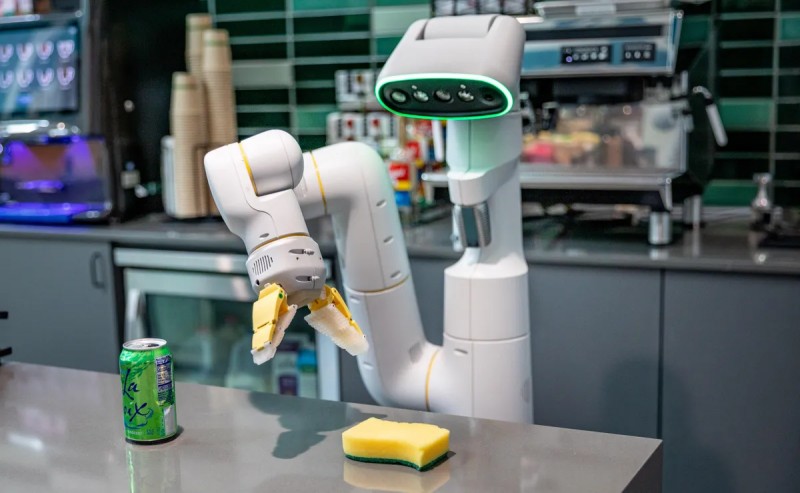
New Delhi:- This is a thrilling period for teaching robots. Organizations have spent many years creating complicated sets of information and leading the way in teaching systems to do new tasks. It looks like we are about to make significant advances in using technology that can quickly adapt and learn.
In the previous year, we have witnessed many interesting research studies. Carnegie Mellon University showed a thing called VRB (Vision-Robotics Bridge) in June. The system can use knowledge gained from YouTube videos in different situations, so a programmer doesn't have to consider every possible difference.
Last month, Google's DeepMind robotics team showcased their amazing creation called RT-2 (Robotic Transformer 2). The system can ignore small details when doing a task. In the example, you don't have to teach a robot to find and pick up certain trash pieces to throw them away. It can do this task without knowing exactly what trash it is.
Also Read:- Google’s will never let you know all this regarding its pop ups
More research conducted by CMU this week compared their work to how humans learn in the beginning stages. In simpler terms, the robotic AI agent is being compared to a three-year-old child. Breaking it down, the level of learning can be divided into two groups: active learning and passive learning.
In simple terms, passive learning means teaching a system to do something by showing it videos or training it using the mentioned datasets. Active learning means actually doing something and making adjustments until you succeed.
RoboAgent is a collaboration between CMU and Meta AI (yes, that Meta) that uses two types of learning, similar to how humans learn. This means watching someone do things online and learning by controlling a robot from a distance. According to the team, the system can use knowledge gained from one environment and use it in another, just like the VRB system mentioned before.
Also Read:- US Judge Greenlights $5 Billion Lawsuit Alleging Google's Privacy Violations
"A robot that can learn like this brings us closer to creating a versatile and adaptable robot that can do many different things in different places. As it learns more, it will keep getting better and improving. " - Shubham Tulsiani, CMU's Robotics Institute. RoboAgent can teach a robot new things using only a small amount of specific information, and mostly uses free information from the internet to learn different tasks. This could help to make robots more helpful in places like houses, hospitals, and other public areas where the environment is not well organized.

One interesting thing about all of this is that the dataset can be freely accessed and used by everyone. This technology is made to work with commonly available robot equipment. This means that both researchers and companies can use it and develop a collection of robot information and abilities.
Abhinav Gupta from the Robotics Institute says that RoboAgents can do more than what others have accomplished and have more advanced skills. "We have demonstrated that our robotic agent possesses a wider range of skills than any other real-world robot before, and it can do so efficiently and effectively in various new situations. This is something that sets our agent apart and makes it special. "
Also Read:- Bluejeans to soon wrap up the suit after downfall
This is all very exciting and full of potential when it comes to creating and using robots that can serve multiple purposes and eventually become widely applicable robots. The aim is to develop advanced technology that can go beyond traditional machines found in strict environments and are commonly referred to as industrial robots. Using something in the real world and making it bigger is much harder than just talking about it.
We are still at the early stages of robotic learning, but we are experiencing an exciting time for new versatile systems.
Also Read:- Google Urgently Appeals to Prevent Transfer of Antitrust Lawsuit Amid Legal Battle
The Deepmind Robotics Team at Google is making good progress in teaching robots how to learn. They have also built a new robot friend called the RT-2.